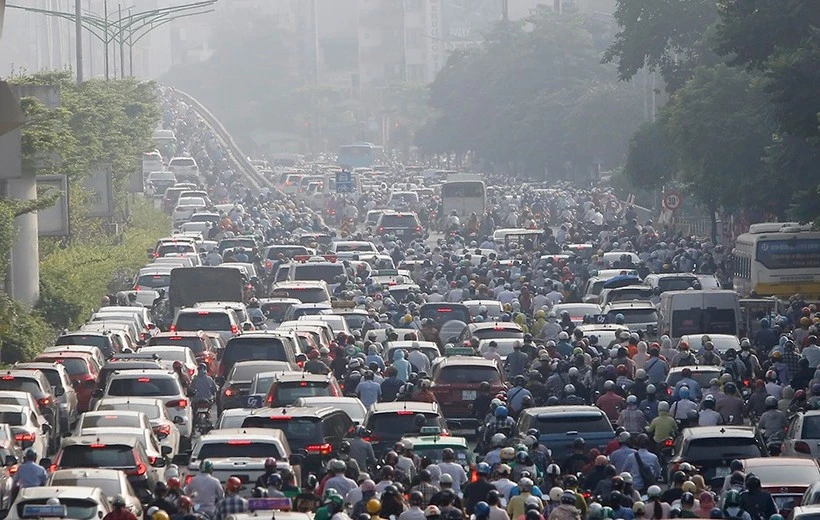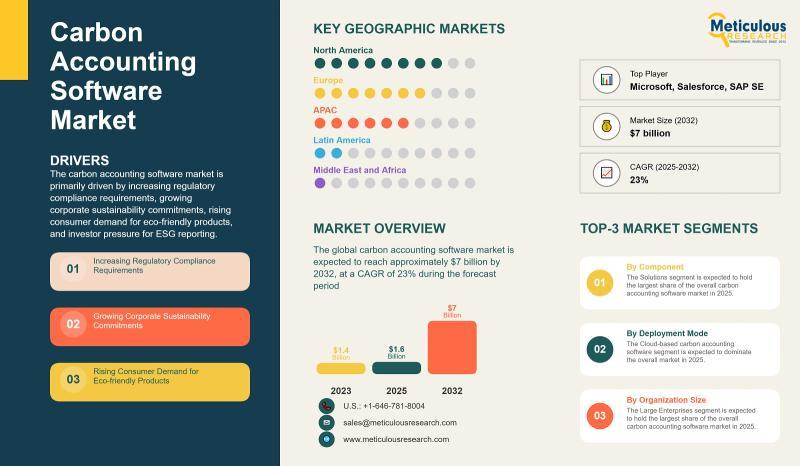Salton Sea not to blame for Coachella, Imperial air pollution, study says – Los Angeles Times

Report on Air Quality and Public Health in the Salton Sea Region: A Sustainable Development Goals Perspective
Executive Summary
A recent analysis of air pollution in California’s Salton Sea region reveals that the exposed lake shoreline contributes minimally to the area’s hazardous particulate matter. The findings suggest that a strategic pivot from source control to exposure control may be more effective in protecting public health and advancing key Sustainable Development Goals (SDGs), particularly SDG 3 (Good Health and Well-being), SDG 10 (Reduced Inequalities), and SDG 11 (Sustainable Cities and Communities). The region, home to predominantly Latino and Indigenous communities, faces a severe public health crisis linked to a complex mix of pollutants, necessitating a collaborative and equitable response.
Analysis of Air Pollution Sources and Composition
The report, drawing on data from multiple agencies, challenges the long-held assumption that the shrinking Salton Sea is the primary driver of air pollution. The key findings include:
- Dust from the exposed Salton Sea shoreline accounts for less than 1% of the total small particle pollution in the region.
- The Salton Sea Basin, Coachella Valley, and Imperial Valley consistently violate federal and state limits for ozone (smog) and particulate matter.
- Pollutants are a complex mixture originating from diverse sources, complicating mitigation efforts.
Primary Pollution Sources
The hazardous air quality is a result of multiple contributors, including:
- Agricultural operations, including chemicals from crop fields and manure from livestock.
- Diesel exhaust from transportation and industrial activities.
- Dust from unpaved roads.
- Fine debris from regional mining operations.
- Naturally occurring pollutants such as bacteria and hydrogen sulfide.
Impact on Public Health and Well-being (SDG 3)
The chronic exposure to poor air quality has severe consequences for residents, directly undermining progress toward SDG 3. The health impacts are particularly acute for children, a key vulnerable group identified within the SDG framework.
- Over 20% of children in communities near the Salton Sea have asthma, a rate nearly double the California state average.
- A 2023 survey reported that 29% of children have experienced wheezing or whistling in the breath.
- Residents report an increase in asthma-related emergencies, nosebleeds, migraines, and nausea.
- Expert analysis indicates that even infinitesimally small amounts of certain toxic particles can have major health effects.
Environmental Justice and Reduced Inequalities (SDG 10)
The air pollution crisis disproportionately affects impoverished and marginalized communities, highlighting a critical environmental justice issue that conflicts with the objectives of SDG 10.
- The most impacted communities include Calipatria, Brawley, and other smaller towns that are predominantly Latino or Indigenous.
- These communities face a dual burden of poverty and environmental degradation, creating systemic disadvantages.
- Focusing solely on indoor air quality solutions may leave outdoor agricultural workers and other vulnerable populations unprotected, further exacerbating inequalities.
Evaluation of Mitigation Strategies for Sustainable Communities (SDG 11)
Current and proposed strategies must be evaluated for their effectiveness in creating safe, resilient, and sustainable living environments as envisioned by SDG 11.
- Current Strategy (Source Control): To date, approximately $49 million has been invested in over 3,000 acres of dust suppression projects (e.g., planting vegetation, spreading gravel). The new report suggests this approach is insufficient given the multiple pollution sources.
- Proposed Strategy (Exposure Control): Researchers advocate for a shift toward protecting people where they are most exposed. This includes distributing high-efficiency air filters for homes, schools, and workplaces; weatherizing homes to prevent infiltration of polluted air; and implementing public alert systems for high-pollution days. This approach is presented as a more cost-effective method to directly improve public health outcomes.
Recommendations and Path Forward
To effectively address the public health crisis and align with the Sustainable Development Goals, a multi-faceted approach is required.
- Foster Partnerships for the Goals (SDG 17): Promote collaboration between local, state, and federal agencies to optimize investments and create integrated public health strategies.
- Adopt a Holistic Mitigation Framework: Combine effective source control measures with a robust exposure control program to protect both indoor and outdoor environments, ensuring no one is left behind.
- Prioritize Environmental Justice (SDG 10): Center the needs of the most vulnerable communities in all policy and investment decisions to ensure equitable health outcomes.
- Invest in Sustainable Infrastructure (SDG 11): Focus on improving indoor air quality in public spaces like schools and community centers as a critical component of building healthy and resilient communities.
Analysis of Sustainable Development Goals in the Article
1. Which SDGs are addressed or connected to the issues highlighted in the article?
-
SDG 3: Good Health and Well-being
- The article directly connects to this goal by focusing on the severe public health crisis in the Salton Sea region. It highlights high rates of asthma and respiratory diseases, stating that “more than one in five children in communities near the Salton Sea have asthma — almost twice the state average.” It also mentions other health effects like “nosebleeds, … migraines, people feeling dizzy, nauseous,” which are linked to the “serious air pollution problem.”
-
SDG 10: Reduced Inequalities
- This goal is relevant because the article points out that the environmental and health burdens disproportionately affect vulnerable populations. It specifies that the communities are “mostly Latino or Indigenous” and are located in “one of the most impoverished and environmentally deteriorated regions in California.” This highlights an environmental justice issue where specific ethnic and low-income groups bear the brunt of pollution.
-
SDG 11: Sustainable Cities and Communities
- The article addresses this goal by discussing the poor environmental quality within human settlements. The focus on air pollution in the Coachella and Imperial valleys, where “the Salton Sea Basin, Coachella Valley and Imperial Valley all violate ozone, or smog, limits,” directly relates to making cities and communities safe and sustainable. The proposed solutions, such as installing air filters and weatherizing homes, are measures to improve living conditions within these communities.
-
SDG 15: Life on Land
- This goal is connected through the discussion of the root environmental problem: the degradation of the Salton Sea ecosystem. The article explains that the sea is “evaporating and shrinking while the exposed, dry lake bed area is expanding, feeding clouds of particulate.” This represents the degradation of an inland freshwater ecosystem. Efforts to control the dust by “planting salt-tolerant vegetation and spreading gravel” are attempts to restore the degraded land and mitigate its harmful effects.
2. What specific targets under those SDGs can be identified based on the article’s content?
-
Under SDG 3: Good Health and Well-being
- Target 3.9: By 2030, substantially reduce the number of deaths and illnesses from hazardous chemicals and air, water and soil pollution and contamination.
The article’s entire focus is on the illnesses (asthma, respiratory disease) caused by air pollution from a “mix” of “agricultural chemicals,” “manure,” “diesel exhaust,” and dust. The discussion aims to find more effective ways to “protect public health and improve the lives of people” suffering from this contamination.
- Target 3.9: By 2030, substantially reduce the number of deaths and illnesses from hazardous chemicals and air, water and soil pollution and contamination.
-
Under SDG 10: Reduced Inequalities
- Target 10.2: By 2030, empower and promote the social, economic and political inclusion of all, irrespective of age, sex, disability, race, ethnicity, origin, religion or economic or other status.
The article implies a failure to meet this target by describing how impoverished, “mostly Latino or Indigenous” communities are disproportionately suffering from severe health issues caused by environmental degradation. The call for agencies to work together to “optimize those investments in public health” for these specific communities is a call for more inclusive environmental protection.
- Target 10.2: By 2030, empower and promote the social, economic and political inclusion of all, irrespective of age, sex, disability, race, ethnicity, origin, religion or economic or other status.
-
Under SDG 11: Sustainable Cities and Communities
- Target 11.6: By 2030, reduce the adverse per capita environmental impact of cities, including by paying special attention to air quality and municipal and other waste management.
The article directly addresses this target by detailing the “serious air pollution problem” and the fact that the region violates state and federal limits for ozone and particulate matter. The debate over whether to focus on source control (dust suppression) or exposure control (air filters in homes) is centered on how to best improve air quality for residents.
- Target 11.6: By 2030, reduce the adverse per capita environmental impact of cities, including by paying special attention to air quality and municipal and other waste management.
-
Under SDG 15: Life on Land
- Target 15.1: By 2030, ensure the conservation, restoration and sustainable use of terrestrial and inland freshwater ecosystems and their services…
The shrinking of the Salton Sea and the expansion of the “exposed, dry lake bed area” is a clear example of a degrading inland water ecosystem. The state’s investment of “$49 million to put in more than 3,000 acres of dust suppression” is a direct, albeit questioned, effort at land restoration to mitigate the negative consequences of this degradation.
- Target 15.1: By 2030, ensure the conservation, restoration and sustainable use of terrestrial and inland freshwater ecosystems and their services…
3. Are there any indicators mentioned or implied in the article that can be used to measure progress towards the identified targets?
-
For Target 3.9 (Reduce illnesses from pollution)
- Health outcome indicators: The article provides specific health metrics that can be tracked, such as the prevalence of asthma in children (currently “more than one in five children”) and the percentage of children experiencing wheezing (currently “29% of parents surveyed said their child has had wheezing”).
- Pollution level indicators: The article mentions that the “Imperial Valley and Salton Sea Basin have twice the state limit for larger particles” and that the region violates “ozone, or smog, limits.” These measurements of particulate matter and ozone are direct indicators of air pollution.
-
For Target 10.2 (Promote inclusion)
- Disparity indicators: An implied indicator is the disparity in health outcomes between the affected communities and the general population. The article provides a clear example: the asthma rate in the region’s children is “almost twice the state average.” Reducing this gap would indicate progress.
-
For Target 11.6 (Reduce adverse environmental impact of cities)
- Air quality indicators: The same pollution level indicators for Target 3.9 apply here, specifically the concentration of small and large particulate matter and ozone levels relative to state and federal limits. The report’s finding that dust from the shoreline accounts for “less than 1% of total small particle pollution” is another specific data point.
-
For Target 15.1 (Restore ecosystems)
- Land restoration indicator: The article provides a quantifiable measure of restoration efforts: the “more than 3,000 acres of dust suppression” projects implemented.
- Land degradation indicator: The rate at which the “exposed, dry lake bed area is expanding” serves as an indicator of ongoing ecosystem degradation.
4. Table of SDGs, Targets, and Indicators
| SDGs | Targets | Indicators |
|---|---|---|
| SDG 3: Good Health and Well-being | 3.9: Reduce illnesses from hazardous chemicals and air, water, and soil pollution. |
|
| SDG 10: Reduced Inequalities | 10.2: Promote social, economic, and political inclusion of all. |
|
| SDG 11: Sustainable Cities and Communities | 11.6: Reduce the adverse per capita environmental impact of cities, especially regarding air quality. |
|
| SDG 15: Life on Land | 15.1: Ensure the conservation and restoration of terrestrial and inland freshwater ecosystems. |
|
Source: latimes.com

What is Your Reaction?
 Like
0
Like
0
 Dislike
0
Dislike
0
 Love
0
Love
0
 Funny
0
Funny
0
 Angry
0
Angry
0
 Sad
0
Sad
0
 Wow
0
Wow
0

















































:focal(1500,1000)/https://media.globalcitizen.org/a6/9a/a69a4720-d8a1-4715-b596-18738d03c05c/rotary_polio_hero_image.jpg?#)






/countries/sri-lanka/photo-credit---dmc-sri-lanka.tmb-1200v.jpg?sfvrsn=dc298bcc_1#)


















